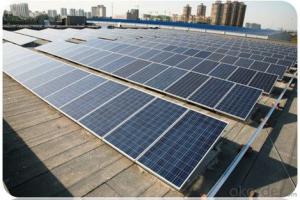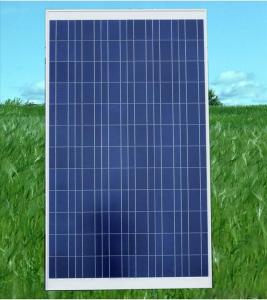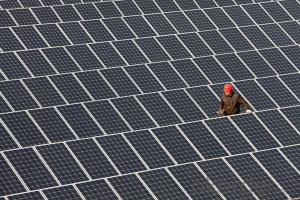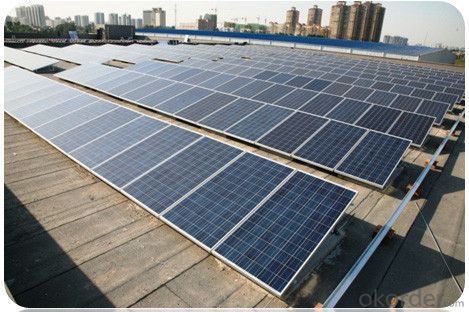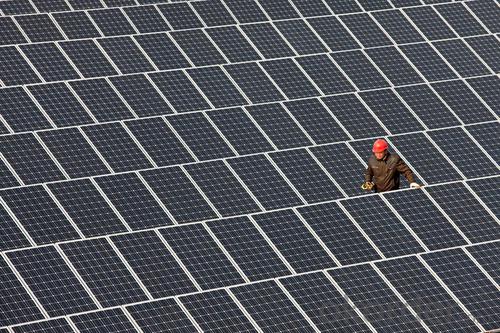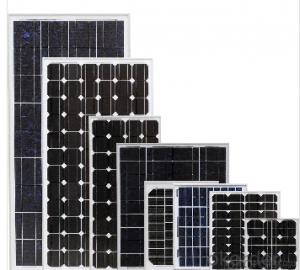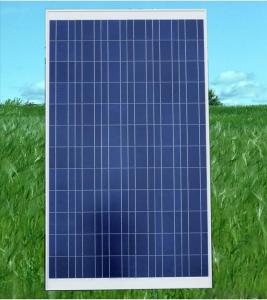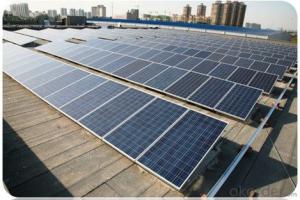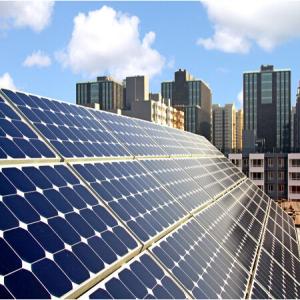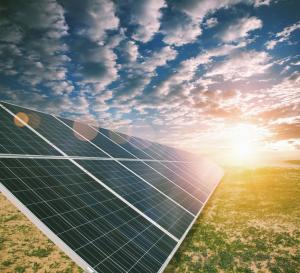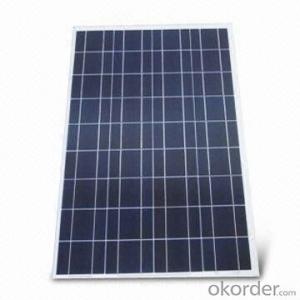250w Polycrystalline Silicon Solar Panels for RV
- Loading Port:
- Guangzhou
- Payment Terms:
- TT OR LC
- Min Order Qty:
- 200000 watt
- Supply Capability:
- 20000000 watt/month
OKorder Service Pledge
OKorder Financial Service
You Might Also Like
Introduction
This installation Manual contains essential information for the electrical and mechanical installation that your must know before installing CUSTOMER PV modules. This also contains safety information you need to be familiar with .All the information described in this manual are the intellectual property of CNBM and based on the technologies and experiences that have been acquired and accumulated in the long history of CUSTOMER. This document does not constitute a warranty, expressed or implied.
CUSTOMER does not assume responsibility and expressly disclaims liability for loss, damage, or expense arising out of in anyway connected with installation, operation, use or maintenance of the PV modules. No responsibility is assumed by CUSTOMER for any infringement of patents or other rights of third parties that may result from use of PV module.
CUSTOMER reserves the right to make changes to the product, specifications or installation manual without prior notice.

Data sheet
Maximum Power | 250W |
Efficiency | 0.154 |
Backsheet | White |
Frame Colar | Silver |
Manufacture Site | China |
Frame | Anodized Aluminum Alloy |
Weight | 19 kg |
Work Principle
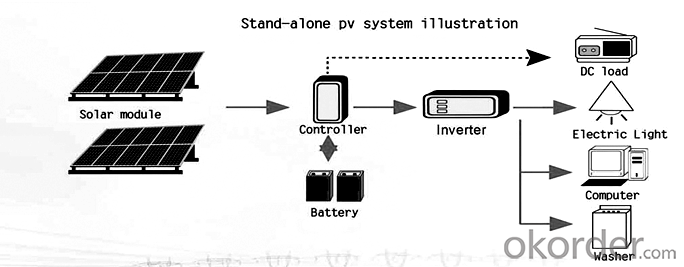
FAQ:
1. How long will my inquiry get response?
Your inquiry related to our products or prices will be replied within 24 hours.
2. Can I get professional service and suggestion?
Well-trained and experienced staffs to answer all your questions in fluent English.
3. Do you accept OEM or customized design?
OEM & ODM, any your customized lightings we can help you to design and put into product.
4. What if I need specific design?
Distributorship are offered for your unique design and some our current models.
- Q: Does anybody know if there are any courses for solar panel installation, and/or what trades you need for this position?
- In Europe the governments offer an electrical buy back incentive of surplus solar electricity but to claim the income the solar panels must be installed by a registered installer who submits details of their skills. The skill to install requires some experience in building/roofing work for which there is no qualification and an electrician to wire up the components to the mains. Electrical engineering courses are available at local tech colleges. If you are just installing a 2/24 volt system you don't really need much experience, it is not syncing a full mains voltage in to the domestic mains! Installing thermal [water] solar uses similar building skills and requires he final fix to be performed by a heating engineer, again the course is available at tech colleges. both plumbing and electrical engineers need to be updated on changes and so there is ongoing education costs and licenses. If you can't afford college [two year +] try finding an employer who will let you work and study part time. There is a lot of demand here so few employers pay for the course but some do. go through your yellow pages and submit your cv to electricians/plumbers. Then when you get qualified learn about solar, and set up your own business. As a builder of sorts! Ive fitted systems and then found a electrician/plumber to do the final fix. You cant beat experience.
- Q: Can solar panels be used to power a concert venue?
- Yes, solar panels can be used to power a concert venue. By installing a sufficient number of solar panels, a concert venue can generate enough electricity to meet its power requirements, including stage lighting, sound systems, and other electrical equipment needed for the event. Additionally, solar panels can help reduce the venue's carbon footprint and dependence on traditional energy sources, making it a more sustainable and environmentally friendly choice.
- Q: By best I mean safest places. If I were to install them on my roof am I risking due to damage from weathering? Such as rain or snow. I don't get very high winds around here, nor any natural disasters such as hurricanes or tornadoes. Does anyone have solar panels that have been durable for a long time? Is it worth the investment?
- Solar panels have to be installed so that they face the equator, so they would have to point south in the U.S.. There are panels designed for exterior mounting and panels designed to go behind glass walls, I've even seen some that are made to replace roof shingles. You'll have to determine if they are worth it or not. Most companies that manufacture the panels rate the output based on the area in which you live. If you live in the north, payback is usually over 20 years, closer to the equator the payoff is quicker, but still a while. The question of worth is relative: are you trying to save money or help save the world? Any alternative to hydro carbon is great for the environment, but most are still very expensive.
- Q: In some countries where electric generation is low, they are not available easily.
- Believe it or not, solar panels are so expensive in this country because of government subsides. Without market competition, companies have no obligation to compete with each other on price. If our government would stop paying people to buy solar panels and giving solar panel companies tax breaks, companies would be forced to lower their price and raise their quality in order to get you to buy their product. This would be true of oil/gas, corn, soy beans and a number of other companies and products as well.
- Q: Can solar panels be installed on a government building or facility?
- Yes, solar panels can be installed on a government building or facility. In fact, many government entities have already started incorporating solar energy as a sustainable and cost-effective solution to meet their energy needs. Solar panels not only help reduce carbon emissions but also provide long-term savings on electricity bills.
- Q: Can solar panels be installed on a pole or ground mount?
- Yes, solar panels can be installed on both poles and ground mounts. Pole-mounted solar panels are typically used in situations where there is limited space or when the panels need to be elevated for better sunlight exposure. Ground-mounted solar panels are commonly used in larger installations or when there is ample available land. Both options offer flexibility in placement and can effectively harness solar energy.
- Q: i really love the idea of solar and want to start out small, so i'm new to this.I plan on getting an 85w panel to charge my laptop. what other equipment is needed to accomplish this?would i need to get a battery or does the solar panel hook directly to the laptop. Does one end just lead to a conventional outlet similar to a wall outlet?could someone please give me a detailed explanation with options about this? i would greatly appreciate it.
- humm..... .need HUGE solar panel (alot) 2. wires 3. aligato clips . put the panels on the roof 2. use the aligator clip to clip the wire from the panel to the bars of the pluger of the comp. charger 3.tada mark me best:)
- Q: How do solar panels affect the environment?
- Solar panels have a positive impact on the environment as they produce clean and renewable energy, reducing the need for fossil fuels. They help decrease greenhouse gas emissions, air pollution, and water usage associated with traditional energy sources. However, the production and disposal of solar panels can have some environmental impact, including the use of certain materials and energy during manufacturing. Overall, their benefits outweigh the potential drawbacks.
- Q: How long does it take to install solar panels?
- The installation time of solar panels can vary depending on various factors such as the size of the system, complexity of the installation, and the availability of resources. On average, a residential solar panel installation can take anywhere between one to three days. However, larger or more intricate installations may require a longer timeframe. It is best to consult with a professional solar installer to get a more accurate estimate based on your specific requirements.
- Q: Can solar panels be installed on a shaded roof?
- Solar panels can still be installed on a shaded roof, but their energy production may be significantly reduced. Shading from nearby trees, buildings, or other obstructions can block sunlight, impacting the panel's efficiency and overall output. It's important to assess the level and duration of shading to determine if solar panels on a shaded roof are a viable option.
Send your message to us
250w Polycrystalline Silicon Solar Panels for RV
- Loading Port:
- Guangzhou
- Payment Terms:
- TT OR LC
- Min Order Qty:
- 200000 watt
- Supply Capability:
- 20000000 watt/month
OKorder Service Pledge
OKorder Financial Service
Similar products
Hot products
Hot Searches
Related keywords
